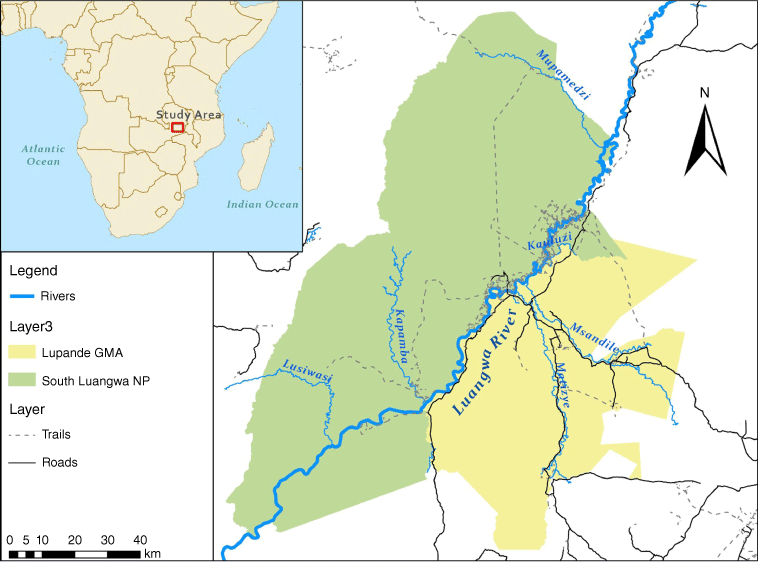
SOUTHWORTH – The role of people, parks and precipitation on the frequency and timing of fires in a sub-Saharan savanna ecosystem
Julius R. Dewald, Imelda K. Moise, Jane Southworth
Article first published online: 14 December 2023
DOI: https://doi.org/10.1071/WF23020
ABSTRACT:
Background
The Lupande Game Management Area (GMA) and the adjacent South Luangwa National Park (NP) in Zambia allow comparison of fire regimes in African savannas with different human densities.
Aims
To investigate humans’ effects on fire regimes within a sub-Saharan savanna ecosystem.
Methods
We delineated burned areas for the Lupande GMA and South Luangwa NP using 156 Landsat images from 1989 to 2017. We performed comparisons of fire regimes between the Lupande GMA and South Luangwa NP using various burned area variables and assessed their association with precipitation.
Key results
Overall, and compared with the South Luangwa NP, the Lupande GMA had a greater extent of burned area and a higher frequency of repeat burns. The Lupande GMA experienced fires earlier in the fire season, which are typically less damaging to woody vegetation. We observed a significant positive relationship between precipitation and burned area trends in South Luangwa NP but not in the Lupande GMA, suggesting that precipitation increases burned area in South Luangwa NP.
Conclusions
Results support the theory that human fire management mitigates climate’s effect, particularly rainfall, on interannual burned area variation.
Implications
This study shows that human-dominated fire regimes in savannas can alter the influence of precipitation.
Read the full publication in International Journal of Wildlife Fire.